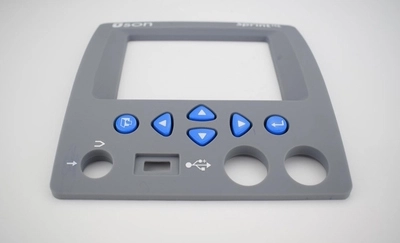
A membrane keypad is a type of keyboard that uses a rubberized sheet to cover the keys. Membrane keypads are typically used for computers and other electronic devices, but they can also be found on some musical instruments and home appliances.
A membrane keyboard consists of a sheet made of plastic or other material that covers the keys, while underneath it is an array of push buttons with electrical contacts. The bottom surface of the sheet has holes poked through it so that when you press down on any key, your finger pushes down on the underlying button. This causes an electrical contact to close on one side of the button and open on the other side; this action sends a signal to your computer or device telling it which key has been pressed.
The first keyboards used mechanical switches to register each keystroke, but this method was expensive and required too much space inside devices such as laptops and smartphones. Membrane keyboards were developed as an alternative to these mechanical models because they could be made smaller without sacrificing functionality or durability. Modern versions of membrane keyboards use capacitive technology instead of physical contact between fingers and keys for even more compact designs.
A membrane keypad is made up of four basic parts. The first part is an insulator, which is the base of the key. The second part is a thin, flexible portion that sits on top of the base. The third part is a conductive portion, which rests on top of the flexible portion of the key. The fourth and last part is a spring that helps provide resistance between the second and third parts and stabilizes repeated presses.
A membrane keyboard works by using a membrane layer to register key presses. The membrane has a circuit printed on it, with one circuit for each key. When a key is pressed, it pushes a rubber dome on the membrane against a circuit, completing the circuit and sending a signal to the computer to register the key press. The rubber dome returns to its original shape when the key is released, breaking the circuit and registering the key release. This type of keyboard is less expensive to manufacture and less prone to mechanical failure than traditional mechanical keyboards, but they generally have a softer, less tactile feel and may be less responsive.
The mechanical and membrane keypads are two different types of keyboards used mostly in computers and other electronic devices. The main difference between the two is that the membrane keypad is made up of a thin layer of material that has been etched with conductive traces, while the mechanical keyboard is made up of physical switches beneath each key.
The membrane keyboard consists of a flexible sheet which contains a grid of conductive traces on its top surface. When you press down on any given key, it makes contact with two or more traces at the same time, which transfers your input signal to the computer or other device. Membrane keyboards are usually cheaper than mechanical ones because they're much easier to manufacture and repair.
On the other hand, mechanical keyboards generally have more tactile feedback when typing compared to membrane keyboards. They also tend to be more durable as well as more resistant to spills, crumbs and dust than their counterparts. This makes them ideal for use in office environments where there's always some kind of mess around (especially if your office mates aren't too careful).
Membrane keyboards don’t need maintenance because they don’t have moving parts like mechanical keyboards do. This means they don’t have to be oiled or cleaned as often as mechanical keyboards do. However, some people say that you should clean your keyboard regularly with compressed air or a vacuum cleaner. If you don’t clean your keyboard regularly, dust and dirt can build up on it over time, which can cause problems like sticking keys or even worn-out letters on your keys due to excessive use over time.
1. There are three layers of circuit boards inside the membrane keypad, the upper and lower layers are printed with conductive circuits, and the center compartment is an insulating layer. The keyboard relies on the silica gel under the keys to press to the end so that the first and third layers of the keyboard can touch and trigger Signal. Because the core circuit inside the keyboard is planned on the membrane material, it is called the membrane keypad.
2. The working principle of the mechanical keyboard is that there is an independent shaft under each key, which is responsible for signal triggering. After the user presses the key, the two springs inside the shaft touch each other and trigger the Signal. Because each mechanical keyboard key needs a unique shaft, the price of a mechanical keyboard is higher and heavier than a membrane keypad.
The advantages of a membrane keypad are low cost, high adaptability, high waterproofing, no wear, and quiet. If the requirements aren't too high or too specific, the membrane keypad can meet all of your daily needs.
If you are looking for higher requirements, you can choose a custom membrane keyboard. Sometimes the gap between ordinary and advanced is not big, but the details bring a better experience, and the mechanical keyboard just meets these needs.